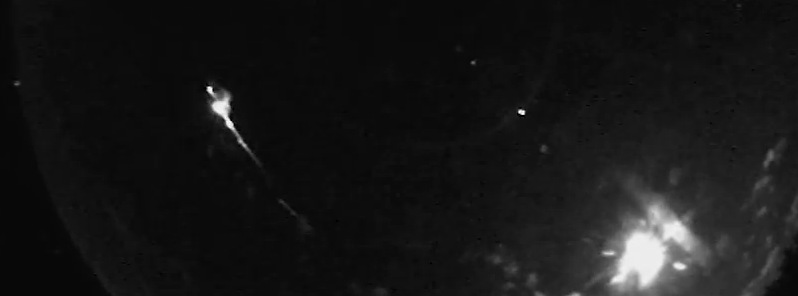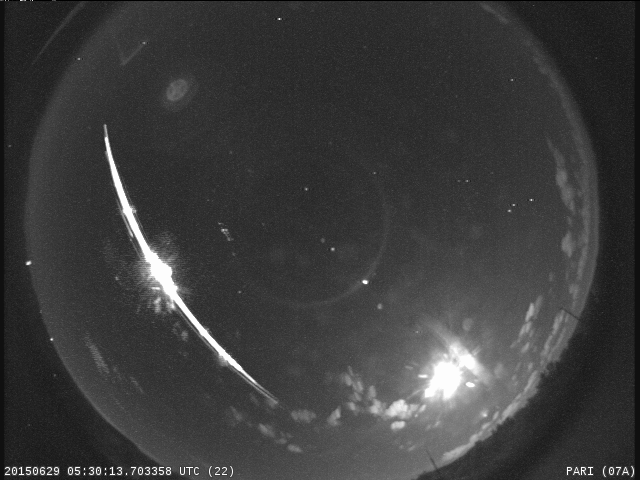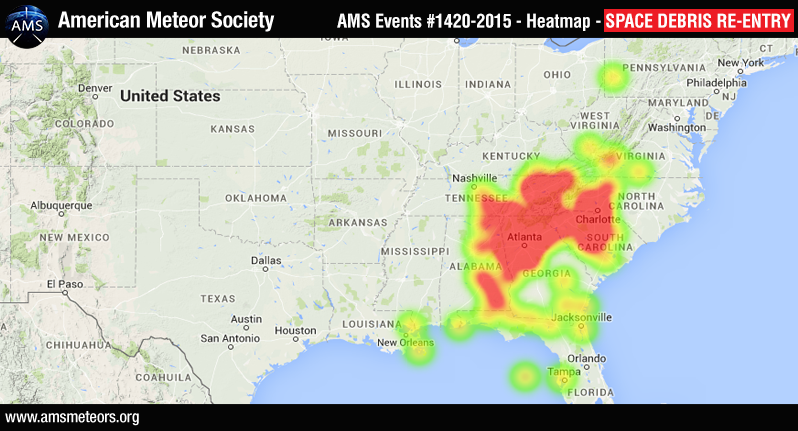Fiery space debris re-entry recorded over Southeastern US

A bright fiery object was observed traveling almost horizontally over Southeastern United States around 05:30 UTC on June 29, 2015 (01:30 EDT).
The object was visible for more than 45 seconds and was described by many as having multiple colors and breaking up in pieces. It was traveling from the SW to the NE over Georgia, South Carolina and North Carolina.
This was most likely the early re-entry of Russian SL-6 Rocket Body 2, a part of Cosmos 2196 Missile Early Warning system, which was launched in 1992 and was predicted to re-enter over the Pacific Ocean at 09:59 UTC (± 1 hours) on June 29, 2015.
According to The Aerospace Corporation, SL-6 Rocket Body 2 re-entered at 05:30 UTC on June 29, much earlier than expected (as indicated by the sightings). The reasons are unknown and additional information is unavailable, they said.

Composite image showing bright event located near Rosman, North Carolina. Credit: NASA.

"It wasn't a meteor," Bill Cooke of the NASA's Meteoroid Environment Office said. "It moved too slowly and had a shallow angle which suggest that it was a re-entry piece of space debris or something like that."


Bill Cooke speaking about the event.
"This thing hit the atmosphere between 14 000 and 16 000 mph (22 500 – 25 700 km/h), and while that sounds fast, meteors move at 24 000 mph (38 600 km/h) or faster. The angle it hit was very shallow, it came in almost horizontal, and that's not typical for meteor either," Cooke explained.


Image credit: AMS.
The American Meteor Society (AMS) said they have received over 150 reports of a bright fiery object. The phenomenon was seen from Georgia, Tennessee, Alabama, North Carolina, Virginia, Florida, Louisiana, South Carolina, Kentucky, West Virginia and Mississippi, they said.
Vincent Perlerin of the AMS wrote:
"As the space junk breaks apart in the atmosphere each nut, bolt or fragment of glass or metal will create a mini fireball. These objects generally travel much slower than fireballs and cover wider distances. Most of the witnesses reported the event lasting more than 45 seconds, where as a normal fireball would last about 3 – 5 seconds. The long duration time, witness descriptions and long distance of travel suggest this object was some type of space debris."


Featured image credit: NASA

Commenting rules and guidelines
We value the thoughts and opinions of our readers and welcome healthy discussions on our website. In order to maintain a respectful and positive community, we ask that all commenters follow these rules.